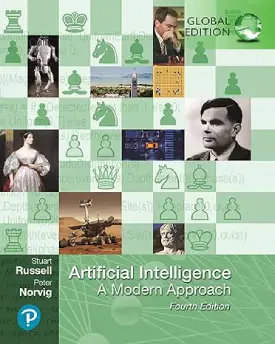Introduction to Data Science: 20 Concepts for Beginners
This article explores an introduction to Data Science (20 Data Science fundamental concepts for beginners).
Table of Contents:
- Data Collection and Cleaning
- Exploratory Data Analysis (EDA)
- Probability and Statistics
- Machine Learning Algorithms
- Model Evaluation and Validation
- Feature Engineering
- Data Visualization
- Big Data Technologies
- Deep Learning
- Ethics and Data Privacy
- Natural Language Processing (NLP)
- Dimensionality Reduction
- Time Series Analysis
- Anomaly Detection
- Recommender Systems
- Bayesian Statistics
- Optimization Techniques
- Data Engineering
- Cloud Computing
- Experimentation and Causal Inference
20 Essential Data Science Concepts for Beginners
Data science is a dynamic and rapidly growing field that combines various disciplines such as statistics, computer science, and domain knowledge to extract meaningful insights from data. Whether you’re just starting your journey into data science or looking to solidify your foundational knowledge, understanding key concepts is crucial. Let’s explore the first part of ten essential introduction to data science concepts that every beginner should know.
1. Data Collection and Cleaning
Data Collection
The first step in the data science process is data collection. It involves gathering raw data from various sources, which can include databases, web scraping, sensors, surveys, and more. The quality and quantity of the data you collect will significantly impact the results of your data analysis.
Key Points:
- Sources: Data can come from structured sources like databases or unstructured sources like text files.
- Methods: Techniques such as web scraping, APIs, and manual data entry are commonly used.
- Tools: Python libraries like Beautiful Soup and Scrapy, as well as tools like Google Analytics, are helpful in data collection.
Data Cleaning
Data cleaning, also known as data preprocessing, is the process of preparing raw data for analysis by removing or correcting errors and inconsistencies. This step is crucial because poor-quality data can lead to inaccurate conclusions.
Key Points:
- Handling Missing Values: Techniques include imputation (replacing missing values with a substitute) or removal of incomplete records.
- Removing Duplicates: Ensuring that duplicate records do not skew results.
- Data Transformation: Converting data types, normalizing values, and encoding categorical variables.
Tools and Techniques:
- Python Libraries: Pandas, NumPy.
- Techniques: Imputation, normalization, standardization.
2. Exploratory Data Analysis (EDA)
Exploratory Data Analysis is an approach to analyzing data sets to summarize their main characteristics, often using visual methods. Hence, EDA is crucial for understanding the underlying patterns, detecting anomalies, and forming hypotheses.
Key Points:
- Descriptive Statistics: Calculating measures such as mean, median, mode, variance, and standard deviation.
- Data Visualization: Using charts like histograms, box plots, scatter plots, and bar charts to visualize data.
- Identifying Patterns: Finding correlations and trends within the data.
Tools and Techniques:
- Python Libraries: Matplotlib, Seaborn, Plotly.
- Techniques: Correlation matrices, pair plots, summary statistics.
3. Probability and Statistics
A solid understanding of probability and statistics is fundamental to data science. As a result, these concepts form the basis for many algorithms and are essential for making inferences and predictions from data.
Key Points:
- Probability Theory: Understanding concepts such as random variables, probability distributions, and expected value.
- Statistical Inference: Techniques like hypothesis testing, confidence intervals, and p-values.
- Descriptive Statistics: Measures of central tendency (mean, median, mode) and variability (range, variance, standard deviation).
Tools and Techniques:
- Python Libraries: SciPy, Statsmodels.
- Techniques: Probability distributions, z-scores, t-tests.

4. Machine Learning Algorithms
Machine learning is a core component of data science. It involves training algorithms on data to make predictions or identify patterns. Therefore, understanding the different types of machine learning algorithms and their applications is essential.
Key Points:
- Supervised Learning: Algorithms are trained on labeled data. Examples include linear regression, logistic regression, and support vector machines.
- Unsupervised Learning: Algorithms find patterns in unlabeled data. Examples include k-means clustering and principal component analysis.
- Reinforcement Learning: Algorithms learn by interacting with an environment to maximize a reward. Examples include Q-learning and deep Q-networks.
Tools and Techniques:
- Python Libraries: Scikit-learn, TensorFlow, Keras.
- Algorithms: Decision trees, neural networks, k-nearest neighbors.
5. Model Evaluation and Validation
Model evaluation and validation are critical steps to ensure that your machine learning models are accurate and generalize well to new data. This involves using various metrics and techniques to assess model performance.
Key Points:
- Train-Test Split: Dividing the data into training and testing sets to evaluate model performance.
- Cross-Validation: Techniques such as k-fold cross-validation to ensure robust model evaluation.
- Evaluation Metrics: Metrics vary depending on the problem type (classification, regression). Examples include accuracy, precision, recall, F1 score, and mean squared error.
Tools and Techniques:
- Python Libraries: Scikit-learn, Keras.
- Techniques: Confusion matrix, ROC curves, AUC.
6. Feature Engineering
Feature engineering involves creating new features or modifying existing ones in order to improve the performance of machine learning models. This step can significantly impact the effectiveness of the models.
Key Points:
- Feature Selection: Identifying the most relevant features for the model.
- Feature Creation: Generating new features from existing data, such as combining features or creating interaction terms.
- Feature Scaling: Techniques like normalization and standardization to ensure features are on a similar scale.
Tools and Techniques:
- Python Libraries: Pandas, Scikit-learn.
- Techniques: One-hot encoding, polynomial features, log transformations.
7. Data Visualization
Data visualization is a powerful tool for understanding and communicating insights from data. Effective visualizations can reveal patterns, trends, and outliers that might not be apparent from raw data.
Key Points:
- Types of Visualizations: Line charts, bar charts, scatter plots, heatmaps, and more.
- Design Principles: Clarity, simplicity, and focusing on the story the data tells.
- Interactive Visualizations: Tools that allow users to interact with data, such as dashboards.
Tools and Techniques:
- Python Libraries: Matplotlib, Seaborn, Plotly.
- Tools: Tableau, Power BI.
8. Big Data Technologies
As data volumes grow, traditional data processing techniques can become inefficient. Consequently, big data technologies enable the processing and analysis of large datasets that conventional tools cannot handle.
Key Points:
- Distributed Computing: Systems like Hadoop and Spark allow for the distribution of data processing tasks across many machines.
- NoSQL Databases: Databases like MongoDB and Cassandra that are designed for scalability and flexibility.
- Data Lakes: Centralized repositories that allow you to store all your structured and unstructured data at any scale.
Tools and Technologies:
- Hadoop Ecosystem: HDFS, MapReduce, Hive.
- Apache Spark: For fast, in-memory data processing.
- NoSQL Databases: MongoDB, Cassandra.

9. Deep Learning
Deep learning, a subset of machine learning, involves neural networks with many layers (deep neural networks) and is particularly powerful for tasks such as image and speech recognition.
Key Points:
- Neural Networks: Understanding the basic structure and operation of neural networks.
- Convolutional Neural Networks (CNNs): Used for image processing tasks.
- Recurrent Neural Networks (RNNs): Used for sequence data, such as time series or natural language processing.
Tools and Frameworks:
- TensorFlow: An open-source deep learning framework.
- Keras: A high-level API for building and training deep learning models.
- PyTorch: A popular deep learning library known for its flexibility and ease of use.
10. Ethics and Data Privacy
Ethics and data privacy are increasingly important in data science. Hence, data scientists must be aware of the ethical implications of their work and ensure they comply with data privacy regulations.
Key Points:
- Ethical Considerations: Understanding bias in data, the impact of algorithms on society, and the importance of transparency and fairness.
- Data Privacy Regulations: Familiarity with regulations such as GDPR (General Data Protection Regulation) and CCPA (California Consumer Privacy Act).
- Responsible AI: Ensuring that AI systems are designed and implemented to be fair, accountable, and transparent.
Practices and Frameworks:
- Ethical Guidelines: Adhering to guidelines set by organizations such as ACM and IEEE.
- Privacy-Preserving Techniques: Anonymization, differential privacy, and secure multi-party computation.
Understanding these ten foundational concepts is essential for any beginner in data science. As you progress in your learning journey, you’ll find that these principles not only serve as a strong foundation but also guide you in more advanced and specialized areas of the field. Embrace the continuous learning process, stay curious, and keep exploring the vast landscape of data science.
Now, let’s explore another 10 essential concepts of introduction to data science.
11. Natural Language Processing (NLP)
Natural Language Processing (NLP) is a field that focuses on the interaction between computers and human language. As a result, it involves enabling computers to understand, interpret, and generate human language.
Key Points:
- Tokenization: Breaking down text into individual words or phrases.
- Sentiment Analysis: Determining the sentiment expressed in a piece of text, such as positive, negative, or neutral.
- Named Entity Recognition (NER): Identifying and classifying named entities (such as people, organizations, locations) in text.
- Language Models: Using models like BERT, GPT to understand and generate human language.
Tools and Libraries:
- NLTK: A leading platform for building Python programs to work with human language data.
- spaCy: An open-source software library for advanced NLP in Python.
- Transformers by Hugging Face: A library providing general-purpose architectures for NLP.
12. Dimensionality Reduction
Dimensionality reduction is a process used to reduce the number of variables under consideration and can be divided into feature selection and feature extraction. Consequently, it helps in simplifying models, reducing computation time, and overcoming the curse of dimensionality.
Key Points:
- Principal Component Analysis (PCA): A technique that transforms data into a set of orthogonal components.
- t-Distributed Stochastic Neighbor Embedding (t-SNE): A technique for dimensionality reduction that is particularly good at preserving the local structure of the data.
- Linear Discriminant Analysis (LDA): Used for pattern recognition and machine learning, primarily in the context of classification.
Tools and Techniques:
- Python Libraries: Scikit-learn.
- Techniques: PCA, t-SNE, LDA.
13. Time Series Analysis
Time series analysis involves analyzing data points collected or recorded at specific time intervals. As a result, it makes the concept crucial for forecasting and understanding trends over time.
Key Points:
- Stationarity: A stationary time series has properties that do not depend on the time at which the series is observed.
- ARIMA Models: Autoregressive Integrated Moving Average models for forecasting.
- Seasonality: Patterns that repeat over a known, fixed period.
Tools and Techniques:
- Python Libraries: Statsmodels, Pandas.
- Techniques: Decomposition, smoothing, forecasting with ARIMA.

14. Anomaly Detection
Anomaly detection involves identifying rare items, events, or observations that raise suspicions by differing significantly from the majority of the data.
Key Points:
- Outlier Detection: Identifying points that significantly differ from other data points.
- Applications: Fraud detection, network security, fault detection in industrial systems.
- Techniques: Statistical methods, machine learning algorithms, and deep learning approaches.
Tools and Techniques:
- Python Libraries: Scikit-learn, PyOD.
- Techniques: Isolation Forest, DBSCAN, Autoencoders.
15. Recommender Systems
Recommender systems predict the preferences or ratings that a user would give to a product. As a result, they are widely used in online platforms to suggest products, services, or information to users.
Key Points:
- Collaborative Filtering: Making recommendations based on user-item interactions.
- Content-Based Filtering: Making recommendations based on the attributes of items.
- Hybrid Systems: Combining both collaborative and content-based methods.
Tools and Libraries:
- Python Libraries: Surprise, LightFM.
- Techniques: Matrix factorization, nearest neighbors, hybrid approaches.
16. Bayesian Statistics
Bayesian statistics involves using Bayes’ theorem to update the probability of a hypothesis as more evidence or information becomes available.
Key Points:
- Bayes’ Theorem: Describes the probability of an event based on prior knowledge of conditions related to the event.
- Prior and Posterior Distributions: The prior represents initial beliefs, and the posterior is updated after considering new evidence.
- Applications: Medical diagnosis, spam filtering, A/B testing.
Tools and Libraries:
- Python Libraries: PyMC3, Stan.
- Techniques: Bayesian inference, Markov Chain Monte Carlo (MCMC).
17. Optimization Techniques
Optimization involves finding the best solution from all feasible solutions. In data science, optimization is hence used to improve model performance and efficiency.
Key Points:
- Gradient Descent: A fundamental optimization algorithm used for minimizing functions.
- Convex Optimization: Problems where the objective function is convex, meaning any local minimum is a global minimum.
- Hyperparameter Tuning: Techniques such as grid search and random search to optimize model parameters.
Tools and Libraries:
- Python Libraries: Scikit-learn, SciPy.
- Techniques: Gradient descent, simulated annealing, evolutionary algorithms.
18. Data Engineering
Data engineering involves designing and building systems for collecting, storing, and analyzing data at scale. Therefore, it is crucial for ensuring that data is accessible, reliable, and well-structured.
Key Points:
- Data Pipelines: Automated processes for moving data from one system to another.
- ETL (Extract, Transform, Load): Processes for extracting data from various sources, transforming it into a suitable format, and loading it into a data warehouse or database.
- Scalability and Reliability: Ensuring data systems can handle large volumes of data and are resilient to failures.
Tools and Technologies:
- Frameworks: Apache Airflow, Luigi.
- Technologies: SQL, NoSQL, Hadoop, Spark.

19. Cloud Computing
Cloud computing provides on-demand availability of computer system resources, particularly data storage and computing power, without direct active management by the user. It’s a key enabler for modern data science.
Key Points:
- Scalability: Easily scale resources up or down based on demand.
- Cost Efficiency: Pay only for what you use, reducing the need for large upfront investments in hardware.
- Accessibility: Access resources from anywhere, enabling remote work and collaboration.
Cloud Providers:
- Amazon Web Services (AWS): Services like EC2, S3, Lambda. (official website)
- Google Cloud Platform (GCP): Services like BigQuery, Cloud Storage, AI Platform. (official website)
- Microsoft Azure: Services like Azure Machine Learning, Blob Storage, Virtual Machines. (official website)
20. Experimentation and Causal Inference
Experimentation involves testing hypotheses through controlled experiments, as a result, often to determine causal relationships. Causal inference is the process of drawing conclusions about cause-and-effect relationships.
Key Points:
- A/B Testing: Comparing two versions of a variable to determine which performs better.
- Randomized Controlled Trials (RCTs): Experiments where subjects are randomly assigned to different groups to test the impact of interventions.
- Causal Models: Techniques like the potential outcomes framework and instrumental variables to infer causality.
Tools and Techniques:
- Python Libraries: Statsmodels, CausalImpact.
- Techniques: A/B testing, propensity score matching, difference-in-differences.
These additional ten concepts of introduction to data science further deepen your understanding of the topic, covering advanced methodologies, tools, and frameworks. Mastering these areas will equip you with a comprehensive skill set to tackle a wide range of data science challenges and projects. Whether you’re analyzing time series data, building robust recommender systems, or ensuring your models are fair and transparent, these concepts are crucial for your success in the field. This was an introduction to data science. For more information regarding the topic, please refer here.





